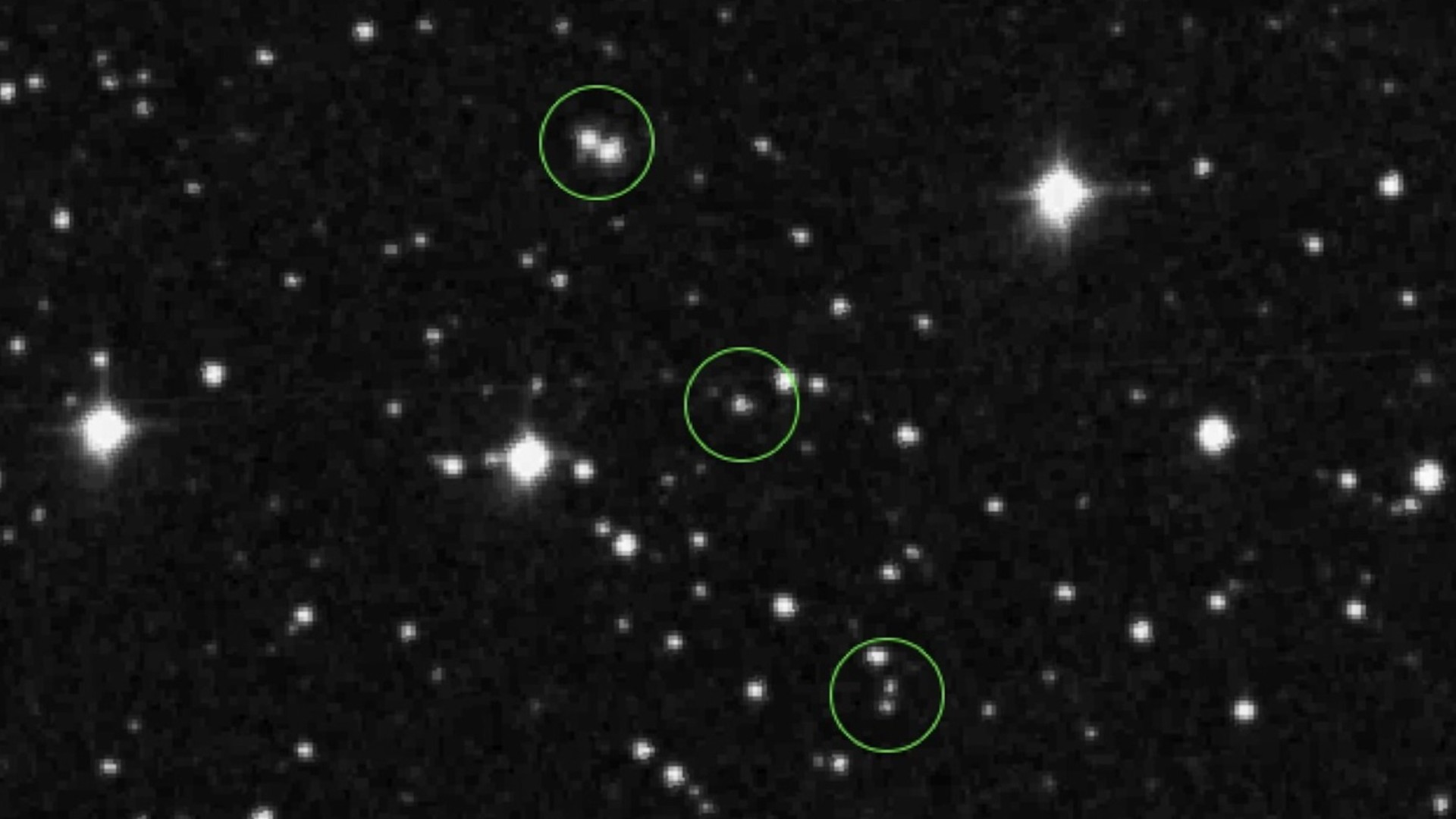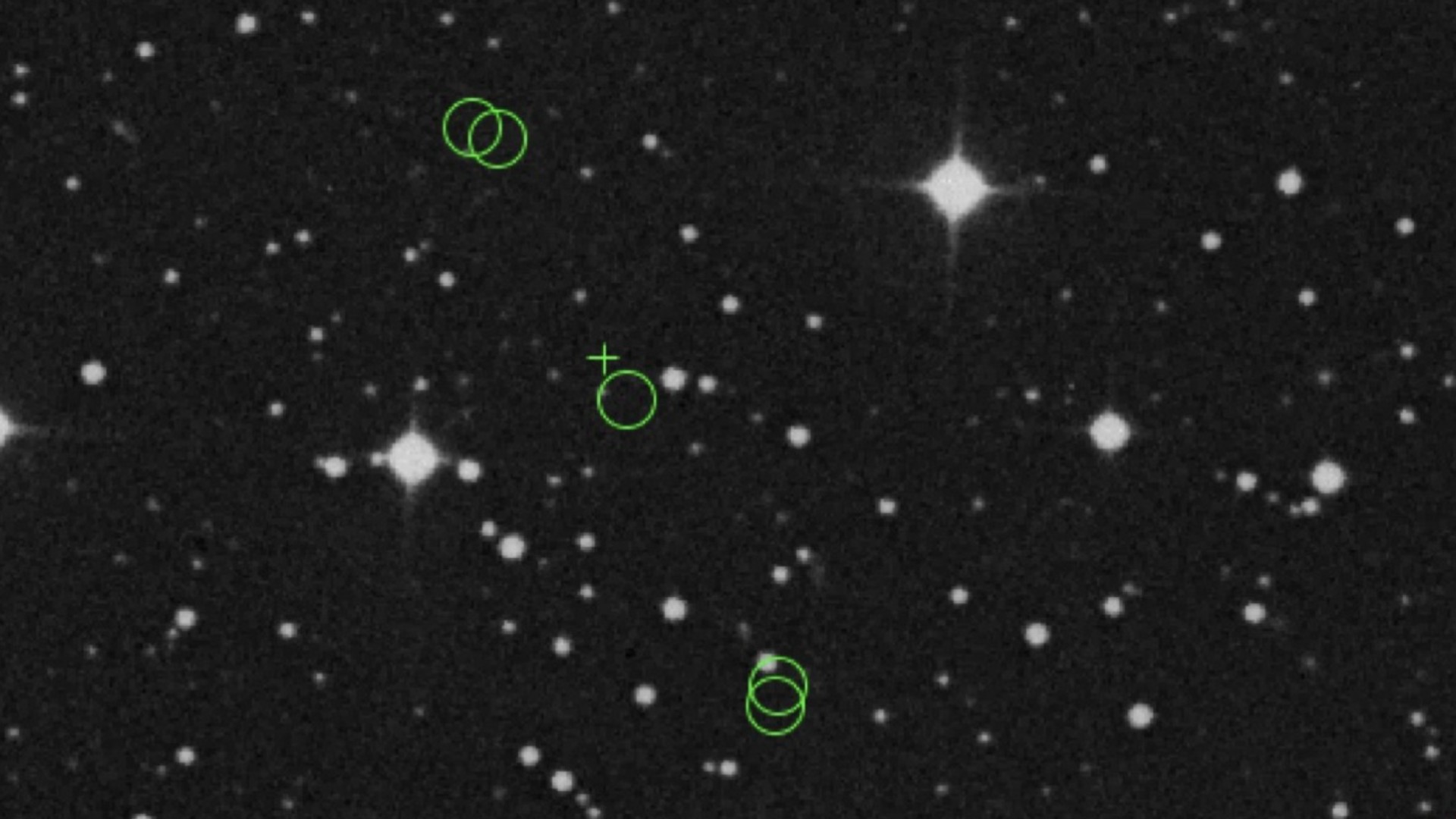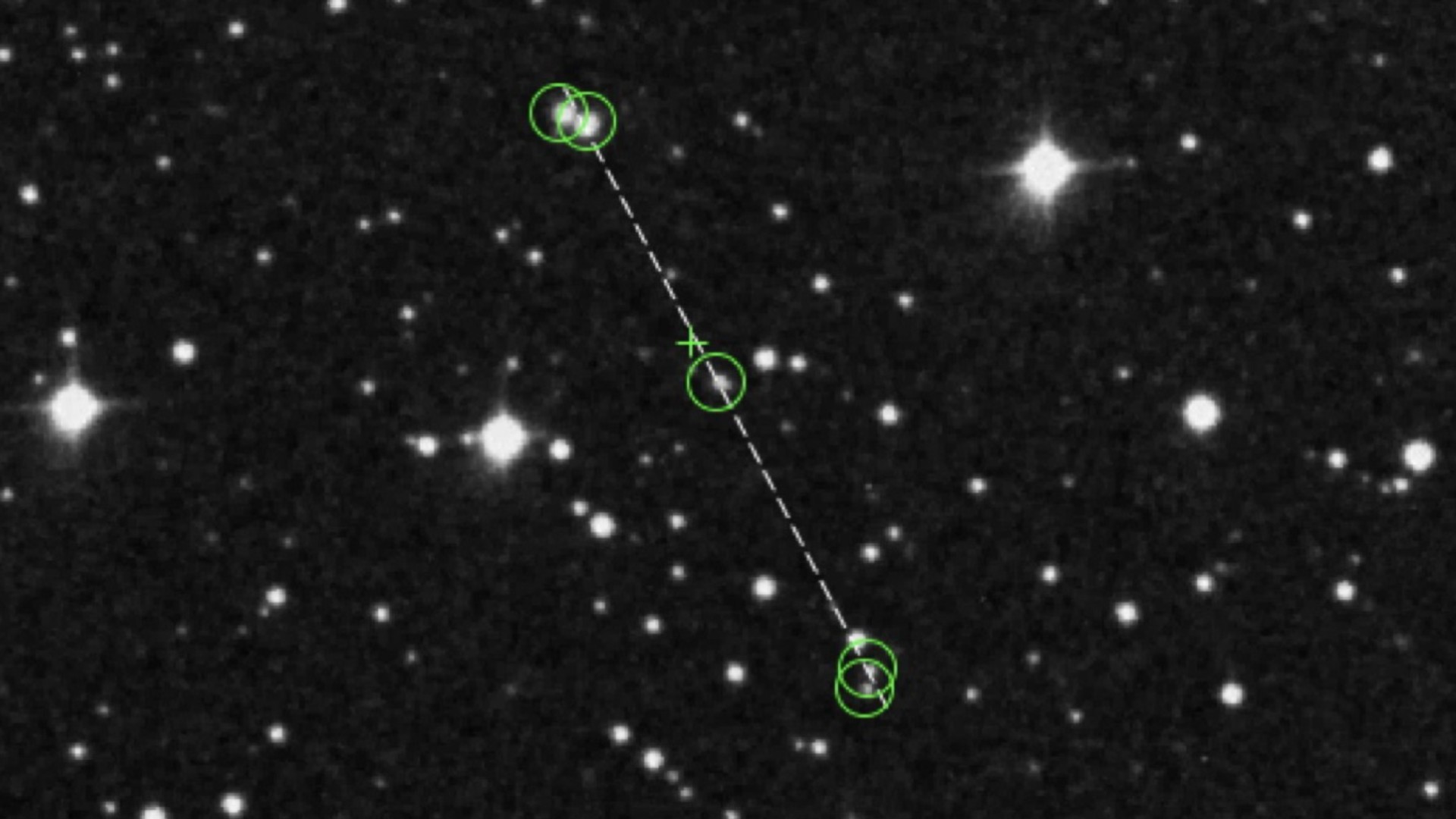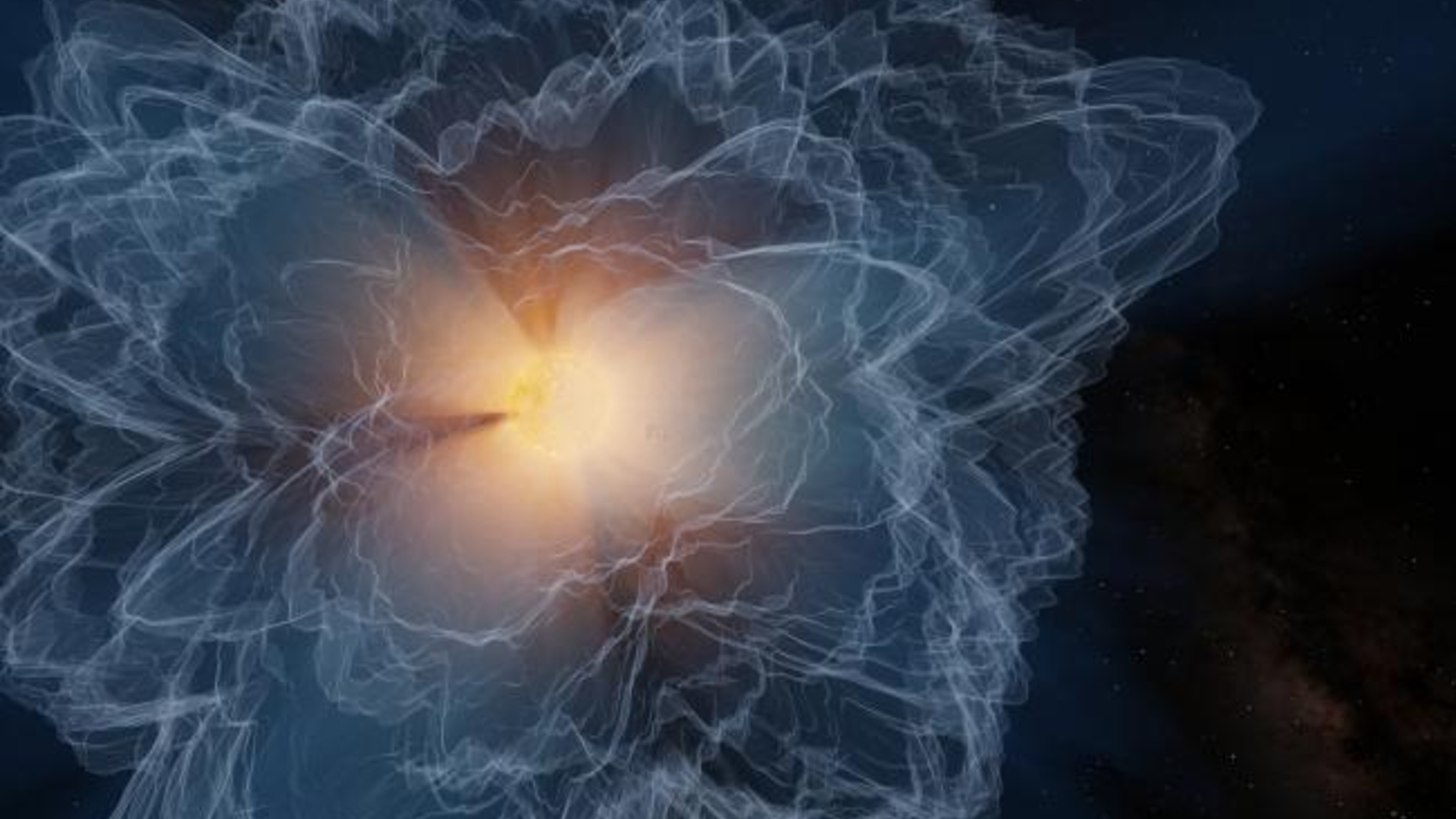Could these mysterious flashes of light in 1950s photos be UFOs? Some researchers think so
Data show that unidentified lights in archival astronomy images were 68% more likely to be imaged 24 hours after a nuclear weapons test.

In the 1950s, mysterious flashes of light were captured on photographic plates taken at the Palomar Observatory in California. Two new studies claim that these flashes were caused by reflective objects in high-Earth orbit connected to sightings of alleged unidentified anomalous phenomena (UAP), a new catch-all term for UFOs not only in the sky, but also in space or even that travel through water.
For the past few years, astronomers including Beatriz Villarroel, of Nordita, Stockholm University, have been scrutinizing photographic plates exposed in the years before the Space Age began, as part of the Vanishing and Appearing Sources during a Century of Observations (VASCO) project. The aim of VASCO is to use archival data, now digitized, to search for new astrophysical transients, which are objects that brighten or fade, sometimes dramatically. These objects can appear as a spot of light in one image of the sky or space, only to vanish in the next.
Villarroel and study co-author Stephen Bruehl, a professor of anesthesiology from the Vanderbilt University School of Medicine, say their data show a statistical correlation between these flashes of light and reported sightings of unidentified objects. “We speculate that some transients could potentially be UAP in Earth orbit that, if descending into the atmosphere, might provide the stimulus for some UAP sightings,” they write in one of the new studies.
When VASCO launched, it had the stated aim of looking for stars that had vanished, which could for example signal a massive star collapsing into black hole without exploding as a supernova. VASCO could potentially also reveal new types of variable stars, active galactic nuclei, stellar flares or even brand new phenomena.
Sometimes the transients VASCO studies are unexplained, which has previously led Villarroel to a startling conclusion: that some of the objects detected on the plates are metallic objects in high Earth-orbit, before the launch of Sputnik 1 in 1957.
“Today we know that short flashes of light are often solar reflections from flat, highly reflective objects in orbit around the Earth, such as satellites and space debris, but the photographic plates analyzed in VASCO were taken before humans had satellites in space,” Villarroel said in a statement.

VASCO researchers analyzed 106,000 transients that look like stars that appeared and swiftly disappeared in a single exposure between the years 1951 and 1957. In particular, the appearance of the unidentified transients were 68% more likely to occur the day after a nuclear weapons test in Earth’s atmosphere than on other day, Bruehl added in the statement.
Breaking space news, the latest updates on rocket launches, skywatching events and more!
“The magnitude of the association between these flashes of light and nuclear tests was surprising, as was the very specific time at which they most often occurred – namely, the day after a test,” said Bruehl. “What they might represent is a very fascinating question that needs further investigation.”
In their study, Villarroel and Bruehl also found that the transients captured by the photographic plates increased by an average of 8.5% for each UAP sighting that was reported.
In a second study, which also included researchers from Algeria, India, Nigeria, Spain, Switzerland, Ukraine and the United States, they found that one anomalous transient coincided with a cluster of flying saucer sightings over Washington, D.C., on 27 July 1952. This particular transient, along with several others, was an instance where multiple flashes of light were seen along a narrow band. This, says Villarroel, suggests flat, reflective objects in motion high above Earth that were reflecting sunlight – a hypothesis supported by the fact that the number of mystery transients drops off in parts of the sky in Earth’s shadow, where sunlight can’t reach.
“You don’t get those kinds of solar reflections from round objects like asteroids or dust grains in space, which leave streaks during a 50-minute exposure, but only if something is very flat and very reflective and reflects the sunlight with a short flash,” said Villarroel.

Villarroel and Bruehl propose another possible explanation, however: that nuclear weapons tests triggered some unknown atmospheric phenomenon that went unnoticed at the time. But Villarroel and Bruehl are skeptical that such a phenomenon would stand still in the atmosphere for 24 hours between the weapons test and when the plate was exposed at Palomar in California. The transients do not seem to be particles of nuclear fallout that have drifted down onto the photographic plate either, since such particles would produce foggy, diffuse spots, not pinpoint, star-like objects.
The explanation Villarroel and Bruehl focus on most in their papers is that these transients are UAP of some kind. Their study connects the nuclear tests to sightings, which have been reported in the vicinity of nuclear sites for decades. "Significantly more UAP sightings were reported within nuclear weapons testing windows (test date + /- 1 day) than outside of testing windows," they report in their study.
There are, of course, many caveats. Critics have claimed that the transients could be photographic defects, or contamination, especially as the plates are quite old and were stored away for many decades before being digitized.
Villarroel and Bruehl perhaps also give too much credit to reports of UFO sightings. Their reported correlation of 8.5% between the appearance of the transients and flying saucer sightings is only relevant if it can be assumed those UAP sightings are credible in the first place. There may also be an observation bias – the 1950s were the heyday of UFO sightings, so it is perhaps not too surprising that there were sightings coinciding with the appearance of transients, since UAP sightings were reported on many different days.
Ultimately, correlation does not necessarily mean causation, and Villarroel and Bruehl do acknowledge this in their study.
In SETI, the search for extraterrestrial intelligence, researchers tend to assume that any unexplained phenomena isn’t aliens, and to exhaust every possible natural explanation before invoking an extraterrestrial one. This approach would be helpful here, although what those alternative explanations might be are not yet certain.
Because of the nuclear test-ban treaty there is, quite rightly, no way to test the hypothesis that the transients are related to atmospheric phenomena caused by nuclear explosions, of which there were at least 124 above the ground between 1951 and 1957.
For now, the discovery of the transients remains an intriguing puzzle. One possible way forward that has been suggested is to try and repeat the observations on the modern day sky. If geosynchronous satellites that we know about produce similar patterns of transients on photographic plates, then that would strengthen the hypothesis that the transients on the Palomar plates could depict metallic objects reflecting sunlight in high orbit.
The two studies are published in Scientific Reports and Publications of the Astronomical Society of the Pacific.

Keith Cooper is a freelance science journalist and editor in the United Kingdom, and has a degree in physics and astrophysics from the University of Manchester. He's the author of "The Contact Paradox: Challenging Our Assumptions in the Search for Extraterrestrial Intelligence" (Bloomsbury Sigma, 2020) and has written articles on astronomy, space, physics and astrobiology for a multitude of magazines and websites.
You must confirm your public display name before commenting
Please logout and then login again, you will then be prompted to enter your display name.
